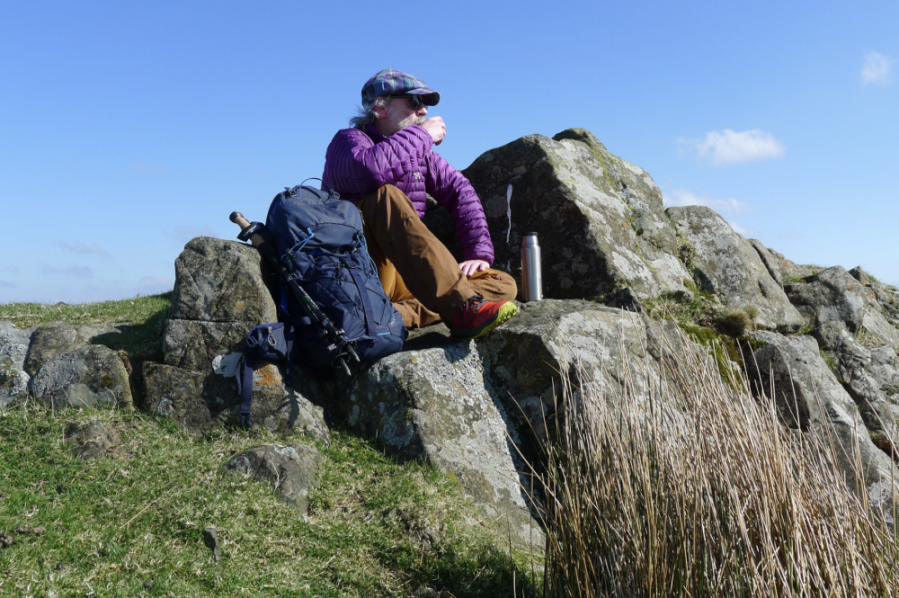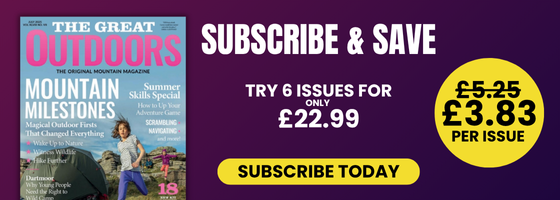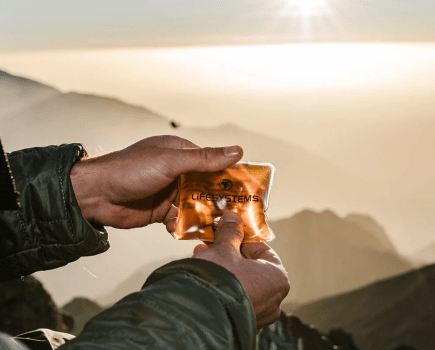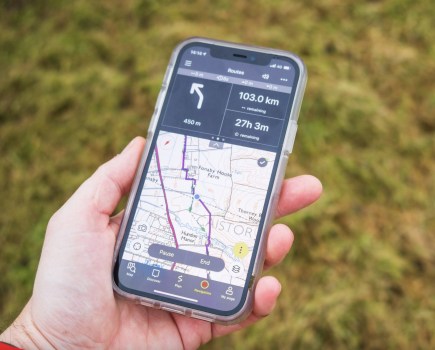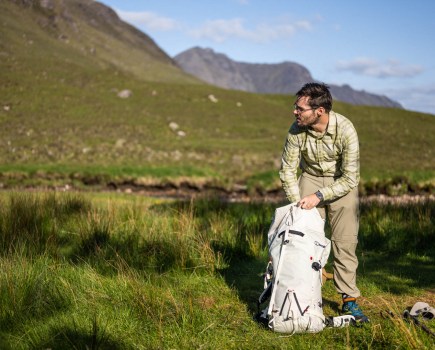In the following article, we will look at the best hiking backpacks for men, referring to hiking backpacks or daypacks that fall between the 15-35 litre range. There are often capacity differences in hiking backpacks, with the women’s versions often having a smaller volume. It’s a frustrating difference, given we all carry a similar range and amount of kit, and it can force women into considering a larger and usually more expensive pack to match capacity.
Main image: Peter testing the Miko 30 | Credit: Peter Macfarlane
To get the best possible value for money, think about the various uses your hiking backpack may be put to, from shopping and commuting to lightweight summer overnighters, winter day trips or European via ferratas. The pack should offer a stable and comfortable wear for long periods of time. A range of pockets is useful but details are a matter of personal preference. Raincovers might seem handy for hiking in Britain’s weather but are rarely fully waterproof and do tend to blow away unless attached. The dream is a pack you can wear but stop noticing, no matter how challenging the trail or load.
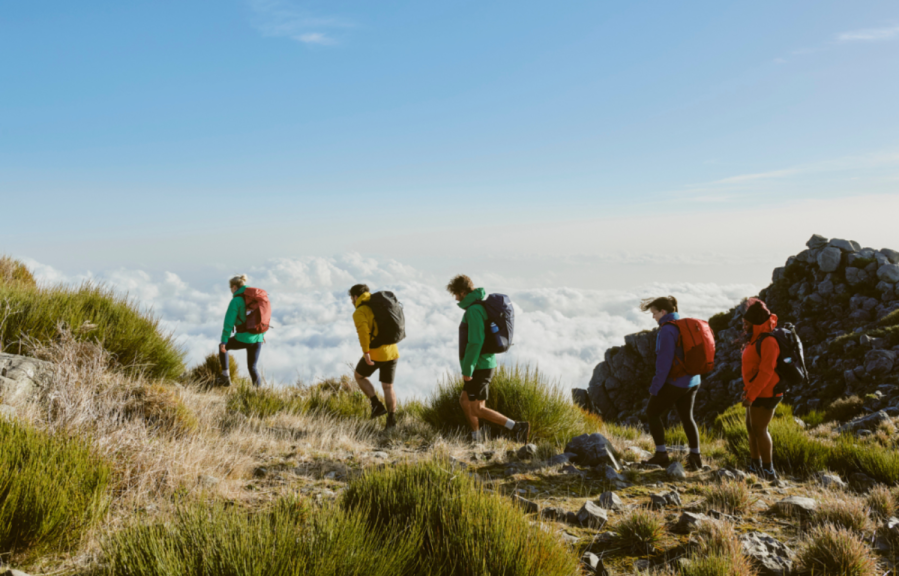
Stability is vital when it comes to uneven and more technical trails and scrambles, making harness shape, adjustment and configuration a key factor in getting the right outcome for any given wearer’s frame and shape. Straps, both shoulder and hip, should have the correct amount of padding and the optimal shape for the individual wearer.
Gender specific or unisex? Some brands have shrunk their ranges in recent years, but many ‘average build’ women – and more slightly built men – find that hiking backpacks for women may offer more comfort. Female-focussed packs usually offer a tuned shape and chassis, to accommodate different back lengths and widths, as well as allowing for the fit and comfort requirements of hips and busts. For the best in women’s daypacks, see our guide to the best backpacks for women.
Why you can trust The Great Outdoors
The Great Outdoors is here to help you make the most of your time outside. We have been helping people to explore from sea to summit, valley to mountain top for over 40 years. Our gear tests remain completely impartial. If you are wary of websites that only review brands that advertise with them, or sceptical of social media accounts always singing the praises of their latest freebie, you’ve come to the right place! Our reviews rank #1 for rigour, trustworthiness, and independence, and our gear testing team is the most experienced in Britain. With over 200 years’ experience between us, we are professional mountain leaders and instructors, wildlife photographers and rangers, outdoor authors, guidebook writers and trail addicts.
Our picks of the best hiking backpacks for men
We’ve put together a list of the best backpacks for men. These packs have been tested by Peter Macfarlane and Chris Townsend.
| Quick List |
|---|
| Best overall: Gregory Miko 30 (available from SportsShoes.com) |
| Lightest in test: Sierra Designs Flex Hike 20-30L (available from Decathlon) |
| Best value: Berghaus Remote Hike 25 (available from Berghaus) |
Best overall
Gregory Miko 30
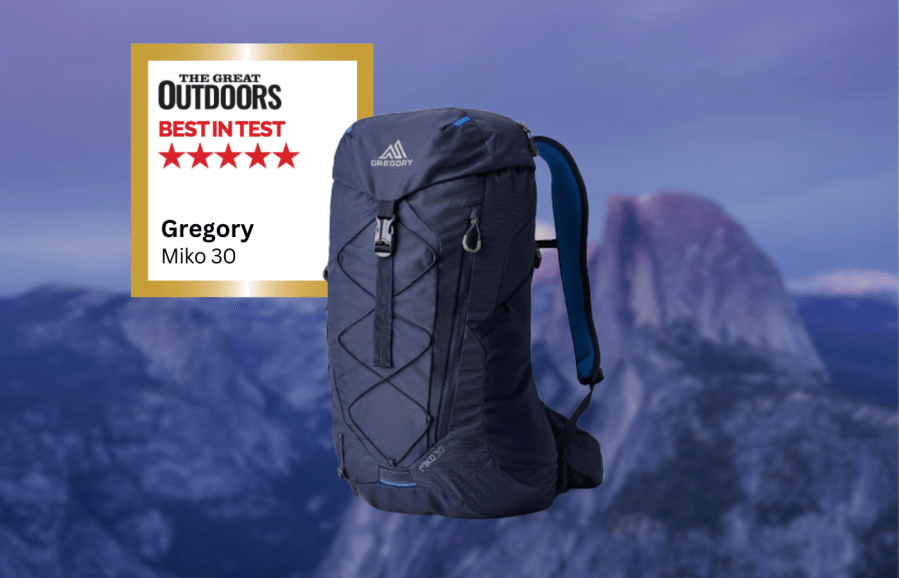
Peter Macfarlane’s Best in Test
The layout, features, carry and little details like the huge faff free zip-pulls make the Miko an easy Best in Test for me and my current go-to day pack.- fit
- comfort
- usability
- features
- hip fin pockets could be a little bigger
| Quick specs |
|---|
| RRP: $169.95 / £145 (available from SportsShoes.com) Weight: 994g Capacity: 30 litres Materials: Body: 100D High Density 30% Recycled Nylon & 210D High Density 45% Recycled Nylon. Base: 210D High Density 45% Recycled Nylon. Lining: 40% Post-consumer Recycled 135d Polyester. All with PFAS-free DWR. Bluesign approved buckles. Back system: adjustable length air mesh back Pockets: lid with pocket, internal and external zipped pockets, accessible side pockets, attachment points, padded hipbelt with pockets Features: single top access compartment, hydration compatible Sizes: regular and plus size Men’s version? Maya 30 eu.gregorypacks.com |
Storage options are a strong feature, with a zipped mesh pocket just inside the closure incliding a keyclip. Outside on the front panel there is a bungee web which I used often for wet waterproofs, but it will take a lightweight tent. Under this is a large pocket with vertical zipped access on the right side. There’s a webbing loop at the bass which takes a bike light and by adding a bungee can expand carrying options still further. There are axe/pole attachments on the left side which were easy to use with gloves through last winter.
The back system is adjustable for length via a Velcro panel which forms part of the shoulder strap assembly. It’s easy to adjust and very secure. I have it set at its maximum length and it’s a perfect fit on my frame. The back system feels quite stiff in the hand but the whole pack can be rolled up so there is a lot of flexibility in there.
The rear panel includes a meshed ridge design – so there is a some attempt at moisture management – but the closer fit adds comfort and stability. I haven’t felt any downside to the simpler back. The lid buckle could do with allowing better adjustment when the pack is only part loaded, the hip fin pockets could be a little bigger volume but otherwise, the layout, features, carry and little details like the huge faff free zip-pulls make the Miko an easy Best in Test for me and my current go-to day pack.
Read more: Peter Macfarlane’s full Gregory Miko 30 review
Best value
Berghaus Remote Hike 25
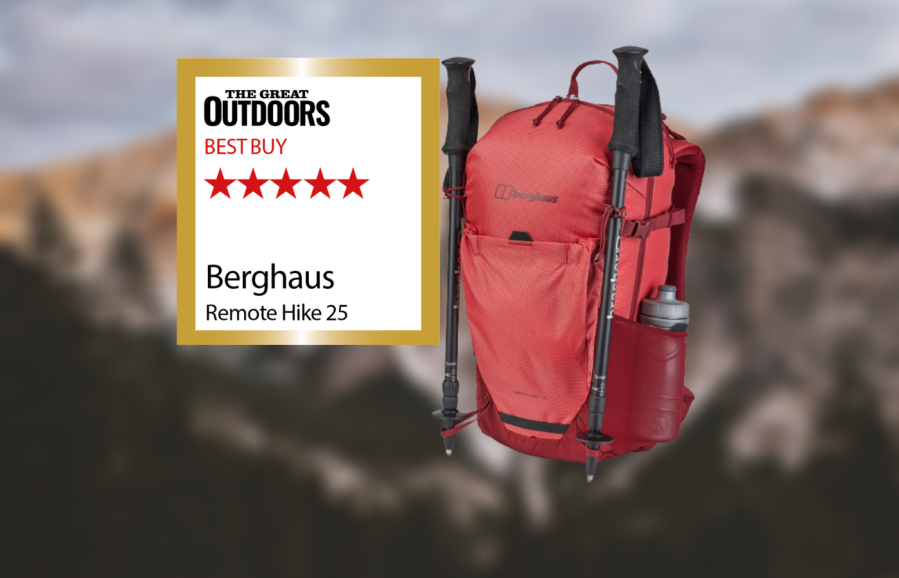
Chris’ Best in Test
The backpack is lightweight, durable, and suitable for 3-season hillwalking.- Large pockets
- Easy access
- Lightweight
- Low cost
- None
| Quick specs | |
|---|---|
| RRP: £75 | International shipping available (Buy now from berghaus.com) Weight: 770g Capacity: 25 litres Materials: PFC-free nylon 200D ripstop Closure: zip-round panel Back system: framesheet with mesh-covered foam panels Back length: 49cm Hipbelt: padded Pockets: elasticated front stash, 2 side mesh, 2 mesh hipbelt, top zipped security Features: Side compression straps, ice axe/trekking pole loops, external hydration sleeve Sizes: one |
Chris Townsend: First up in our guide to the best hiking backpacks is the Remote Hike 25. The Berghaus Remote Hike 25 is a comfortable and functional hiking backpack with a weight capacity of 25 litres. It features thick mesh-covered shoulder straps, hipbelt, and back padding, distributing weight well and providing stability. The pack has a non-padded channel down the center of the back for airflow and reducing sweat build-up. The backpack is made of PFC-free nylon 200D ripstop, has a zip-round panel closure, and has a back system with mesh-covered foam panels. It has a zip-round panel closure, a framesheet with mesh-covered foam panels, and a back length of 49cm. The daypack is lightweight, durable, and suitable for 3-season hillwalking.
Read more: Berghaus Remote Hike 25 review
Osprey Talon Earth 22
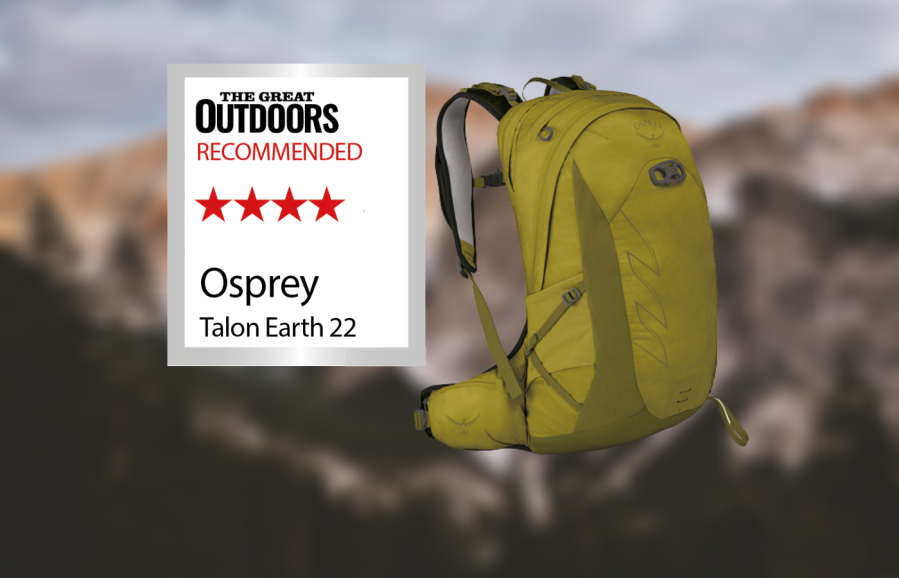
Chris Recommends
The pack carries fine. If the features work for you the Osprey Talon Earth 22 is an excellent option.- Recycled materials
- Easy access
- Expensive
- Quite Heavy
| Quick specs | |
|---|---|
| RRP: $129 | £90 (Buy now from ospreyeurope.com) Weight: 1060g Capacity: 22 litres Materials: bluesign-approved recycled 100D x 210D high-tenacity nylon with PFC/PFAS-free DWR Closure: zip-round panel Back system: recycled framesheet, 50% recycled mesh-covered cut-out EVA foam Back length: adjustable, 49-56cm Hipbelt: padded Pockets: 2 side mesh, 2 zipped hipbelt, zipped top, internal zipped security, padded laptop sleeve Features: side compression straps, bike helmet attachment, tuckaway ice axe loop, external hydration sleeve Sizes: one |
Chris Townsend: Osprey has released the Osprey Talon Earth 22 hiking backpack, a sustainable option with a 1060g weight and 22 litre capacity. The backpack is made of bluesign-approved recycled 100D x 210D high-tenacity nylon with PFC/PFAS-free DWR, with a zip-round panel closure and a recycled framesheet and 50% recycled mesh-covered cut-out EVA foam back system. The backpack features side compression straps, bike helmet attachment, tuckaway ice axe loop, and an external hydration sleeve. The backpack is comfortable to carry with well-padded shoulder straps, back, and hipbelt.
The main compartment has good access via a long zip, while the side and hipbelt pockets are roomy. However, there is no front pocket and the laptop sleeve next to the back is not suitable for hills and city use. The pack is quite heavy for its size.
Read more: Osprey Talon Earth 22 review
Sierra Designs Flex Hike 20-30L
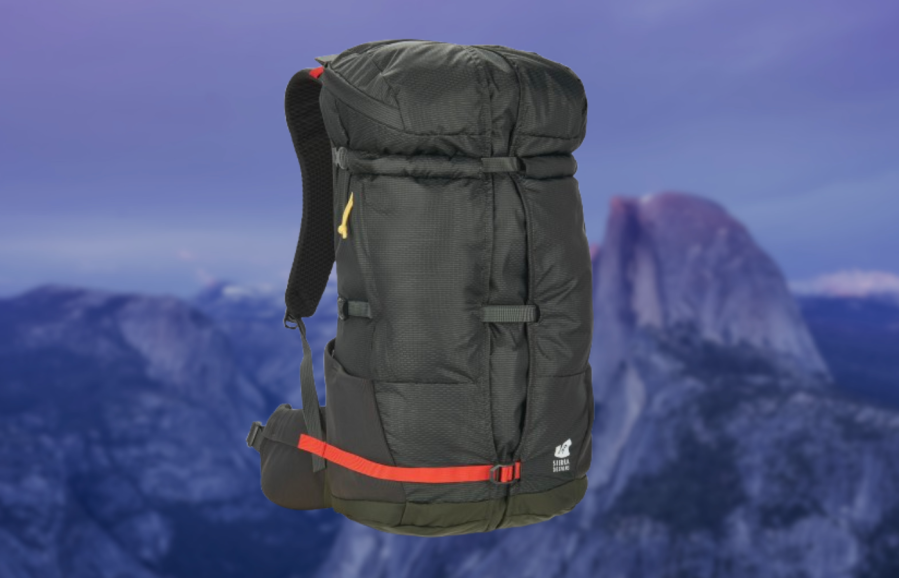
Peter Macfarlane’s verdict
This is an interesting and unusual pack that I’ve got on well with but do check the fixed back length works for you.- comfortable
- good pockets and features
- capacity adjustment / compression system
- limited external carrying options
- adjustable back length on the absolute limit for my height
| Quick specs |
|---|
| RRP: $149.95 / £150 (available from Decathlon) Weight: 932g Capacity: 32 litres Materials: 100D Nylon Honeycomb/420D Oxford Back system: Contact Stream back system Pockets: accessible side pockets, zipped access lid with pocket, padded hipfins with pockets Features: expandable main compartment, shoulder straps adjustable for height, hydration compatible Sizes: 20-30L capacity, one back size – adjustable Men’s version? Unisex sierradesigns.com |
The clue is in the name here with the Sierra Designs Flex Hike 20-30L – a system that allows you to change the capacity from 20 litres to 30 litres. It’s an unusual system with a bellowed gusset that runs the full length of the pack, adding extra width when it’s fully opened. The adjustment is via three webbing straps at base, middle and top. The base strap is a simple cinch with a ladder lock buckle while the higher two run right round the pack in channels through the fabric and have clip lock buckles which makes adjustment quite easy. This capacity change does put the load further out from your body rather than evenly spreading the weight when it’s at its maximum but at these volumes it doesn’t really affect stability much.
The back length is adjustable via the shoulder straps which have buckled attachments to shorten and lengthen them. It’s simple and works well with the padding on the back system lining up well enough on both myself at the maximum and my partner at minimum length. The back system is quite stiff which resists deformation when the pack is cinched, and it’s a comfortable carry. The back padding is thick with large gaps so has a good amount of free air space to help with sweat management.
This is an interesting and unusual pack that I’ve got on well with but do check the fixed back length works for you.
Read more: Peter Macfarlane’s full Sierra Designs Flex Hike review
Montane Orbiton 20
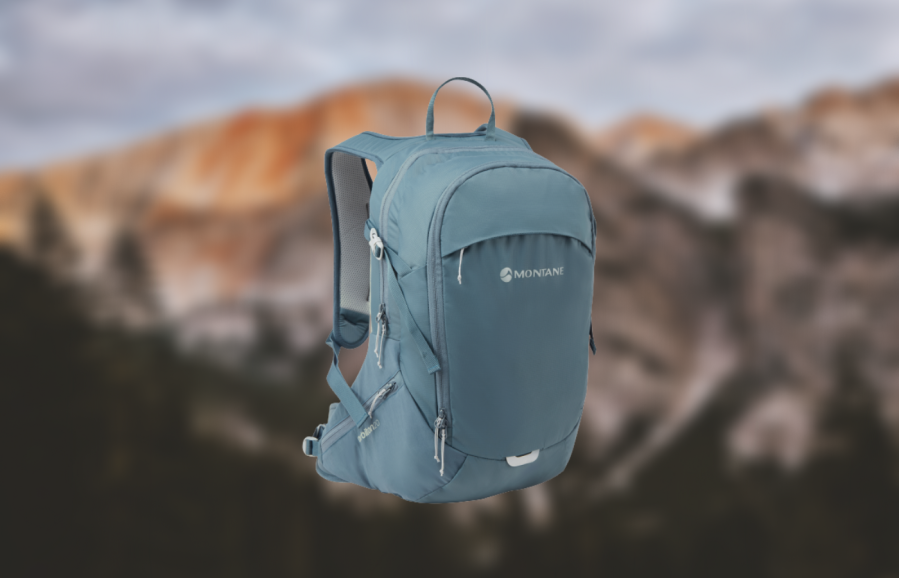
Chris’ verdict
Overall, this is a neat little pack that carries well. I think there are better choices for hillwalking though- Weight
- Cost
- Access
- Small pockets
| Quick specs |
|---|
| RRP: $195 | £160 (Buy now from montane.com) Weight: 815g Capacity: 20 litres Materials: 210D grid nylon Closure: 2 zip-round panels Back system: framesheet, padded panels Back length: 47cm Hipbelt: padded, adjustable for walk, run or bike Pockets: zipped front, 2 stretch mesh side, 2 stretch mesh shoulder strap, zipped inner, inner organiser, padded laptop/tablet/phone sleeves Features: side compression straps Sizes: one |
Chris Townsend: The Montane Orbiton 20 is a lightweight hiking backpack designed for various outdoor activities, including walking, running, biking, and hillwalking. It features a hipbelt that can be adjusted with stud fasteners, making it comfortable for both walking and running.
The pack weighs 815g, has a large zip top closure, and has a back system with AirZone and FormKnit technology foam. It has two compartments, one easily accessible via a long zip, and urban-compatible features like a padded laptop sleeve and tablet/phone sleeve. While it is a neat and well-packaged option, it may not be suitable for hillwalking.
Read more: Montane Orbiton 20 review
Rab Protium 27
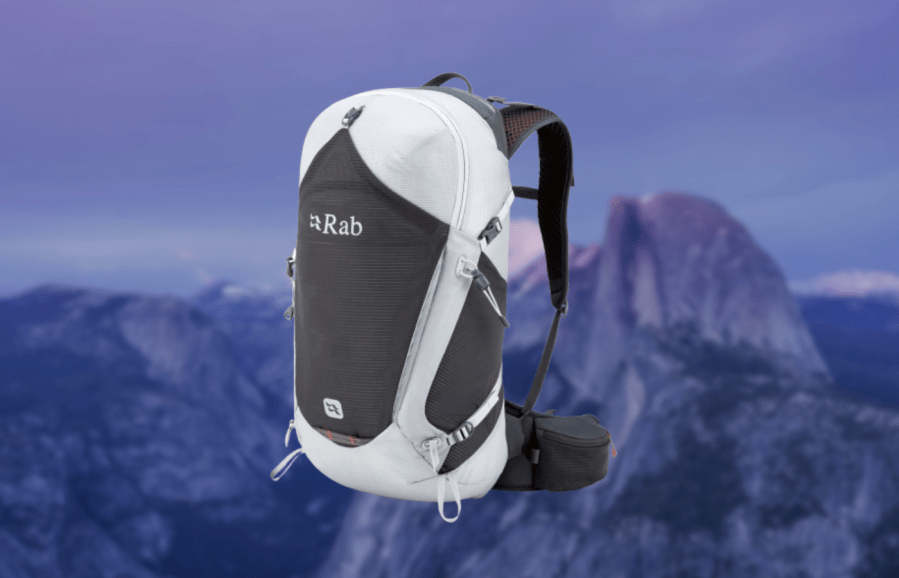
Peter Macfarlane’s verdict
There are some frustrating and compromising details on an otherwise excellent load carrier.- stable
- comfortable
- good back system and harness
- side pockets are inaccessible in use
- heavy
| Quick specs |
|---|
| RRP: $175 / £130 (available from Rab) Weight: 1065g Capacity: 27 litres Materials: 100D Robic Nylon Ripstop, 140D Nylon Back system: adjustable air contour back system, semi rigid ABS plastic back system Pockets: hip fins with zipped pockets, large external front and side mesh pockets, zipped access with external and internal pockets Features: rain cover, hydration compatible Sizes: regular and L/XL Women’s version? Protium ND25L rab.equipment |
The Rab Protium 27 is styled for more technical adventures, with a tapered bottom end for clearance when scrambling and a wider top which spreads the load across the shoulders. This shape works for running and mountain biking, although at over a kilo the Protium is a little heavy to be used for either. The excellent harness is height adjustable, and the padded and well-contoured shoulder straps easily slide up and down behind the stiffened back to Velcro into place at your chosen length. The stiff back helps to support a full load with stability and it has air gaps and mesh to promote moisture management.
The hip fins are the same mesh over foam design as the shoulder straps. They sit well on my frame and have good sized zipped pockets. The zipped main access is easy to use and there are pockets inside and outside at the zip which replicate handy lid pockets. On the front panel is a huge mesh stuff pocket with a securing buckle which I can even fit a small tent into.
The pack is hydration compatible with a sleeve and hanging loop behind the back system but if you use bottles you have to take the pack off every time I want a drink. The pockets are also restricted by the compression straps, which can push bottles upwards on the move.
Read more: Peter Macfarlane’s full Rab Protium 27 review
How we test
Reserve Ranger Peter rotated the packs on his regular 11km deer fence inspection walks in the Kilpatrick Hills and took them into the Munros through the winter. Peter is 1.8m in height and wears between regular and tall back lengths depending on design and brand. Peter’s reviews of the best hiking backpacks and daypacks first appeared in the August 2025 issue of The Great Outdoors.
Chris stands 5ft 8in tall, with a stocky body, and short legs. He put these packs through their paces on lower-level excursions in the Cairngorms National Park in late autumn and winter. The weather was wintry, with snow and ice on the ground at times, and stormy. The packs’ sturdiness certainly got a good testing, as did ease of use with gloves. Chris’ reviews of the best hiking backpacks and daypacks first appeared in the April 2023 issue of The Great Outdoors.
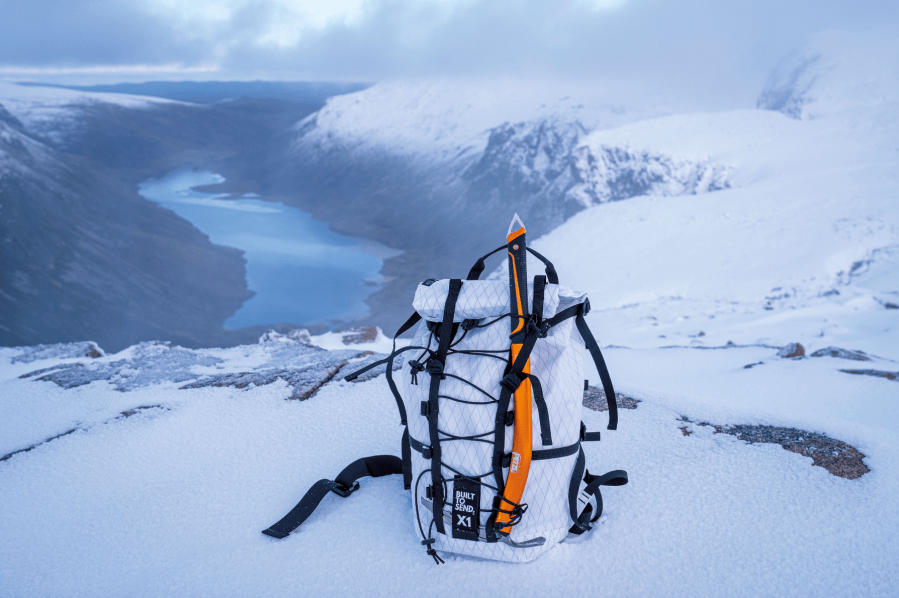
Features to look for in backpacks for men and women
Capacity
Daypacks vary in volume from sub twenty to over thirty-five litres. Choosing the right volume for your activity depends on how much equipment you plan to carry on your day out. In winter or poor weather, a larger volume is useful for the additional kit needed.
Pockets
External stash pockets add volume to a small pack and are handy for stowing items in a hurry. Zipped pockets are great for safely storing snacks and small essentials.
Lid
Smaller hiking backpacks may not have a top lid, but in larger rucksacks they are useful for keeping rain out of the main compartment and providing storage space for one or two zipped pockets. Extendable lids enable an occasional larger load to be carried.
Hiking backpacks compression straps
These are useful for cinching down a half-empty pack or securing poles, bottles, and other loose items.
Hip belt
Provides stability and comfort. For heavier loads, a wide hip belt that sits on the hips is comfortable, to transfer the load away from the shoulders. Smaller daypacks may have a simple waist strap that helps hold the pack steady.
Back system
Often in partnership with a frame, this provides stability, ventilation and in some hiking backpacks, adjustability to accommodate a range of back lengths. Some systems hold the pack away from the body for maximum ventilation, others help the pack hug close for increased stability (good for scrambling or biking).
Shoulder straps
Shape, padding, and profile make a difference to comfort especially for curvier body shapes. Make sure they are adjustable and there are no big gaps.
Raincover
Some rucksacks have a water resistant (not waterproof!) cover that can be extended over the rucksack to help protect contents in wet weather.

How to fit your backpack
A lot of products are now offering two or more fixed back length options for experimenting on the same model. Many backpacks for men have adjustable back systems, which are worth trying in store; some are straightforward, while others can be a faff. It is easy to overlook this feature as unnecessary or something to set and forget, but it can allow you to tune the fit of your pack between summer use – over just a base layer – and pulling it on over winter layers.
Load the pack with weight to test the fit. Adjust the shoulder straps and the waist belt. The hip fins should catch the top of your hip bones to transfer weight from your back to your hips. The shoulder straps should follow the curve of your shoulders from your chest to your back. Large gaps indicate a pack that is too long for your back.
Next, put your arms above your head, to check freedom of movement when scrambling. Can you reach a water bottle stashed in the side pockets? If the store has stairs, use them to test the stability of hiking backpacks. Does it move around, or is it secure? You and your hiking backpack are going to spend many hours together. Choose wisely and it will become part of your daily life, a partner on the hill as well as the daily commute to work or the park.

